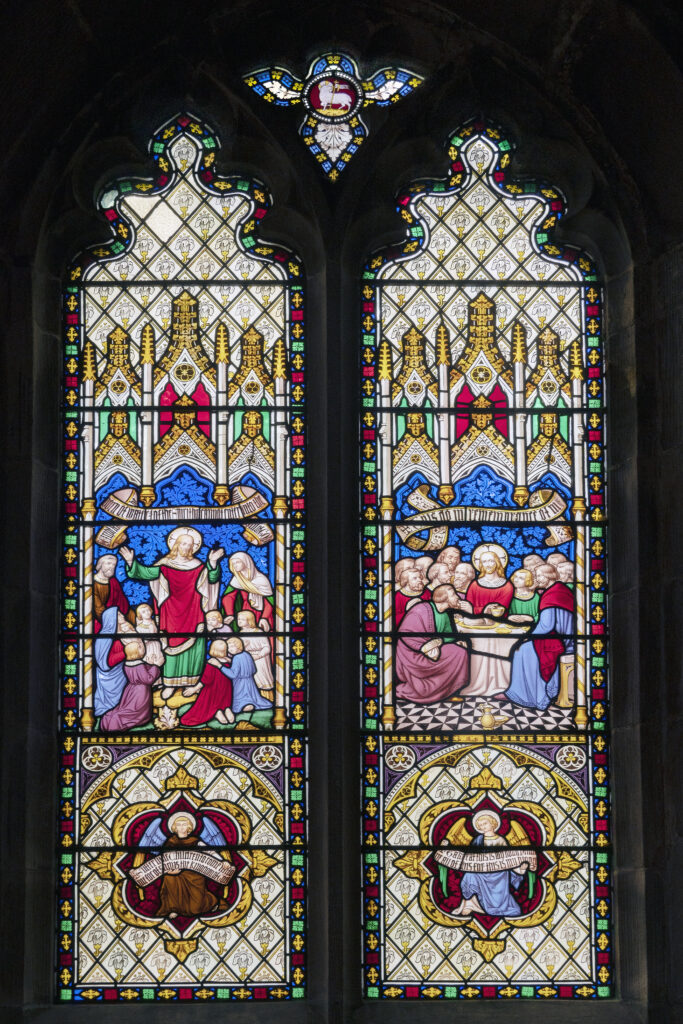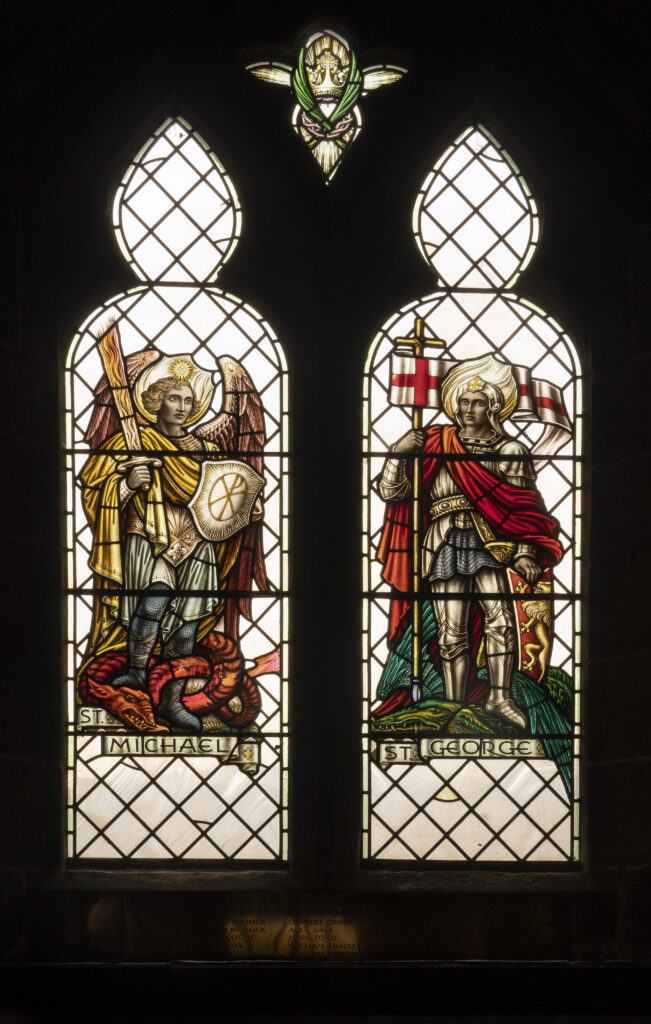Background
Before the nineteenth century most memorials in Anglican Churches took the form of sculptures and wall tablets and this can be seen in St Mary’s along the walls of the north and south aisles. Any stained-glass windows usually dated back to medieval times and many of these were destroyed following the Reformation. However, with the advent of the Gothic revival in church architecture following the large investment in church building in the early 1800s, stained-glass windows came back into fashion and by the end of the century British stained glass held a leading position in the world. In the Victorian period at least 80,000 windows were supplied to churches in England and Wales.
The new windows copied the medieval principles and designs and this can be seen in the windows in St Mary’s which all date from the middle of the nineteenth century when the church was restored and extended by George Gilbert Scott and his team of architects, masons and glass makers. The revival was to a large extent due to the Anglo-Catholic Oxford Movement which, as well as a return to pre-Reformation Christian traditions also emphasised visual demonstrations of faith such as candles, vestments and stained-glass windows. Whilst St Mary’s Church under the leadership of the Rev John Armistead was not in the vanguard of these developments, nevertheless the use of stained-glass to illustrate Biblical stories and themes is used extensively in the church.

